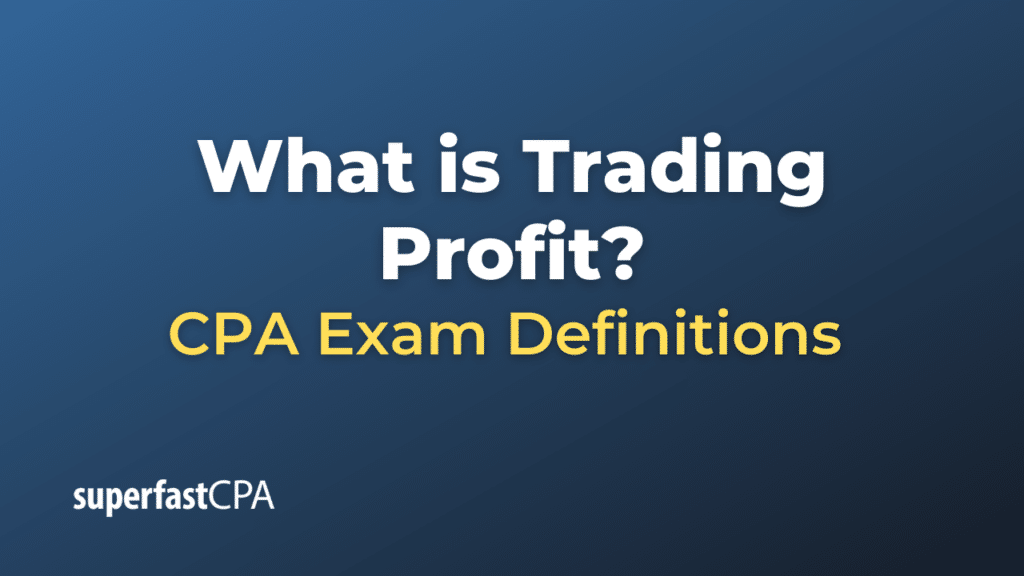Trading Profit
Trading profit refers to the profit that a company generates from its core business activities, excluding any non-operating or exceptional items. In simpler terms, it’s the profit made from the company’s main business activities, like selling goods or providing services, as opposed to activities like the sale of an asset or income from investments.
The term is often used to differentiate between:
- Core operating profit: This derives primarily from a company’s main business activities. For instance, for a company that manufactures shoes, the trading profit would be the profit from selling those shoes.
- Overall net profit: This would include all sources of income and costs, including exceptional or one-off items. For the shoe company, this might include the profit or loss from selling a piece of company property or earnings from investments.
The steps to calculate trading profit typically involve:
- Starting with gross sales or revenue.
- Subtracting the cost of goods sold (COGS) to get the gross profit.
- Subtracting all operating expenses related to the main business activities to get the trading profit.
It’s important to note that different industries and countries might use the term slightly differently or prefer other terms like “operating profit,” “operating income,” or “earnings before interest and taxes (EBIT).” Always ensure you understand the context and specific calculation methodology when interpreting financial statements or figures.
Example of Trading Profit
Let’s walk through a simple example of a fictional company called “Happy Shirts Ltd.” to calculate its trading profit.
Happy Shirts Ltd. Financial Data for 2023:
- Total Sales (Revenue): $1,000,000
- This represents all the money taken in from selling shirts.
- Cost of Goods Sold (COGS): $600,000
- These are direct costs related to producing the shirts. It includes materials, labor for manufacturing, etc.
By subtracting COGS from Sales:
GrossProfit = TotalSales − COGS
Gross Profit = $1,000,000 – $600,000 = $400,000
Now, let’s account for the operating expenses:
- Operating Expenses: $250,000
Subtracting operating expenses from the gross profit gives:
TradingProfit (or OperatingProfit) = GrossProfit − OperatingExpenses
Trading Profit = $400,000 – $250,000 = $150,000
So, the trading profit for “Happy Shirts Ltd.” for the year 2023 is $150,000.
This means after accounting for the direct costs of making the shirts and the operating expenses to run the business, “Happy Shirts Ltd.” made a profit of $150,000 from its core business activities. Other incomes or expenses (like interest, taxes, or one-off items) are not considered in this calculation.













